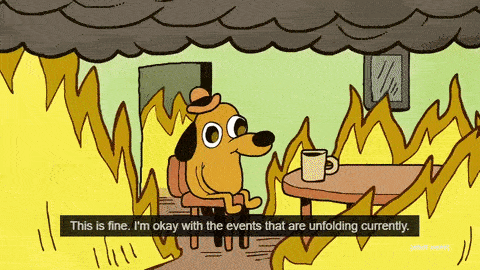
Photo by James Pond on Unsplash
It is any brand leader’s worst nightmare.
Disturbing, compelling and seemingly irrefutable video evidence of customer mistreatment explodes across the internet. Messages of outrage and calls to boycott – many originating from the brand’s largest growing market – are rampant. Sign-wielding slogan-shouting protesters descend upon a core business location.
This is what the leadership of United Airlines faced on April 10, 2017, one day after airline and airport personnel forcibly removed Dr. David Dao – a ticketed passenger – from a flight to make room for airline crewmembers.
What occurred on that plane was appalling, and the initial public response was terribly unfortunate for the brand.
But the crisis didn’t begin until CEO Oscar Munoz responded.
While we tend to use the word “crisis” to describe some kind of disaster, the origin of the word is actually closer to the word “choice.”
The noun crisis comes from the Greek krisis, meaning “turning point.” At a turning point – the moment of crisis – every choice determines how the situation will proceed, either closer to resolution or closer to chaos.
Crisis management is the management of choices at a turning point.
In the case of United Airlines in April 2017, better choices at the first turning point (and long before) could have made all the difference.
Lesson #1: Crisis response messaging should not be crafted by your legal team.
The United Airlines crisis began with Mr. Munoz’s first public response, which apologized for the “upsetting event” caused by “having to re-accommodate” customers and promised only to “conduct a review of what happened.”
Such arm-length-from-the-human-experience wording was no doubt enthusiastically approved, if not written, by a legal team whose job it is to avoid or minimize litigious risk.
The problem with that? It sacrifices empathy and caring for the customer in favor of self-protection.
A better approach?
Establish a core team and a crisis communications plan.
This team – comprised of your organization’s most seasoned communicators, consumer experience leaders and, yes, attorneys – studies and prepares for likely operational and reputational emergencies in advance.
They establish pre-approved response statements that show empathy for those affected as well as organizational commitment to respond appropriately.
They practice crisis response at least twice a year through drills led by outside experts, giving them the opportunity to continually review and improve the plan and build muscle memory along the way.
Just as important, team members develop a camaraderie in which each member from each discipline understands the importance and role of the other, allowing the team to quickly advise leadership calmly and wisely.
Lesson #2: Don’t speak or act in a way that isn’t true to your brand values.
Mr. Munoz’s initial response was offered from a posture of self-protection. His language was in stark contrast to the company’s value statement, which includes phrases like “warm and welcoming,” “respect every voice,” “communicate openly and honestly,” and “make decisions with facts and empathy.”

Had that first statement reflected the values of the brand, this incident would not be a chapter in so many public relations textbooks today.
In his book, The Agony of Decision, Helio Fred Garcia offers a simple but effective guiding principle for leaders facing a turning point, “What would reasonable people appropriately expect a responsible organization to do in this situation?”
At Doe-Anderson, we take that guiding principle a step further: “What would reasonable people appropriately expect MY BRAND to do in this situation?”
You have invested years building your brand and living up to your brand promise, placing your brand in a position of trust among your consumers. A response that doesn’t ring true to your brand can destroy that trust in an instant.
Lesson #3: Respond quickly, but not until you have the whole (or enough of the) story.
Mr. Munoz offered at least three vastly different statements in the first 36 hours after the social media storm began. His statements shifted in response to public outcry and in response to information that he could and should have had in the very first hours following Dr. Dao’s removal.
Six questions should be asked and answered in order when an emergency arises.
What happened?
What needs to be solved?
Is anyone injured or negatively impacted?
How does this affect who we are and what people expect of us?
What actions and approach do we take?
What can we commit to and then say?
The answer to each question informs the next and helps shape both operational and communication response, keeping your organization from jumping ahead to crafting an uninformed or off-target statement.
#4: Don’t send internal messages that conflict with public ones.
Quick, calm and honest direct communication with employees, board members and other internal audiences is a key component to any successful crisis response plan.
In today’s world, however, “internal” communications should not be considered “private” communications.
Shortly after making his first attempt at a reassuring public response, Mr. Munoz distributed a letter to employees supporting the team members responsible for Dr. Dao’s bloody ejection and accusing the victim of being “disruptive and belligerent.”
Within moments the letter was shared on social media and hit the mainstream news, leading to a new wave of public backlash.
Internal messages, just like external ones, should be true to brand values, open, honest, timely and calm. Internal messages may include directives not found in public statements but otherwise should be cut from the same cloth.
#5: Don’t wait to say you’re sorry when you should be sorry.
The American consumer expects brands they support to be empathetic to their needs and experiences. Demonstrating this empathy is particularly important in times of crisis.
Not every crisis requires an apology, however. An apology is necessary only when there are actual victims of a brand’s action or inaction.
In this case of the United Airlines incident, there were clearly actual victims.
Mr. Munoz did not offer an apology until after the widespread outrage over his initial response showed no signs of slowing. When his first apology fell flat, he offered a second the following day. The lack of empathy and remorse in his first response permanently tainted the perceived sincerity of his eventual expressions of regret.

By delaying the much-needed apology, United Airlines lost its one opportunity to keep faith with consumers.
As Gary Chapman and Jennifer Thomas explain in their book, The Five Languages of an Apology, not all apologies are created equal.
Different language is required depending on whether the brand needs to express regret, responsibility, restitution, repentance, forgiveness or any combination of the above.
True apologies are authentic, quick and reinforced by action.
Most of the harm done to brands in crisis is self-inflicted.
The good news is that by properly managing your brand’s preparation, response and messaging, you can make choices that help your brand survive and even thrive through the test.
)
)